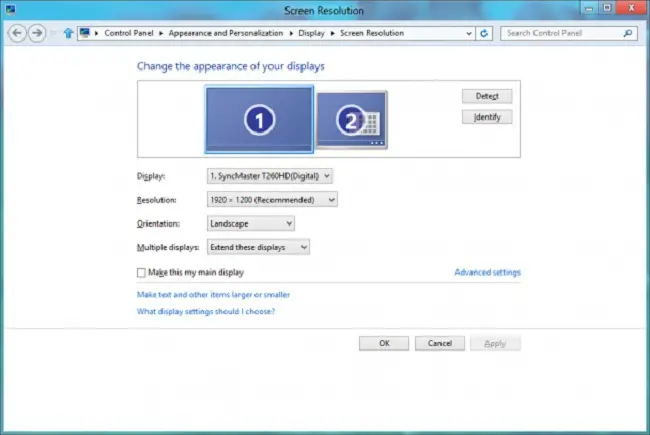Why I made my smaller screen the main display on Windows 8

Windows 8’s multi-monitor support is much improved on the desktop, but it’s disappointing on the Metro-style side. In many ways, it feels like Microsoft took one step forward but two steps back. The worst offender is notifications, which only appear on the primary display. This became such a problem for me that I ended up making my secondary monitor the main display on Windows 8.
I like to use a dual-screen setup with my PC. The primary display is a big widescreen monitor, while the secondary display has a slightly smaller and more rectangular shape. This arrangement is perfect for gaming – both on consoles and PC – since I can enjoy the gaming experience on my primary display while leaving the secondary one free for checking email, instant messaging, looking up achievements, checking Twitter, or anything else I might feel like doing. Windows 8’s new taskbar improvements make this experience even nicer for desktop apps. But since installing the Windows 8 Release Preview, notifications have been a source of unending frustration. When playing a game, it’s impossible to see notifications about an incoming email or IM, even if the Metro-style UI is displayed on the secondary monitor. As a result, there have been more than a few instances where I’ve completely “ignored” a friend or family member for hours on end. Granted, notifications can also be seen on the Start screen’s live tiles, but if you’re using an app or you’re on the desktop, good luck seeing any notifications.
After a few weeks of attempting to deal with this, getting more and more frustrated every time, I finally decided to switch my main display over to the secondary screen. Now, notifications are always visible, no matter what I happen to be doing. Of course, this isn’t without its tradeoffs. The lock/logon screen and some taskbar functions like the icon tray and clock are now shown on my secondary display. With the exception of the lock/logon screen, I actually prefer this change, since the clock is now always visible in the lower-right hand corner. New icons also appear on my secondary screen by default, although it’s very easy to move them to a different screen (like with the Recycle Bin). Additionally, when working in the Metro-style environment, it’s almost beneficial to have files automatically appear on the desktop on the other screen. On the other hand, programs now default to the “wrong” screen. I haven’t attempted to play a full-screen game yet, but I suspect that it will try to start on the secondary screen as well.
Making your secondary screen the main display isn’t an ideal solution to the notification issue, but it works quite well. Having desktop applications and the Start screen default to the secondary display is a small price to pay for being able to see what’s going on while the primary display is in use. I just hope Microsoft adds more notification options to Windows 8 before the OS is released this fall.


